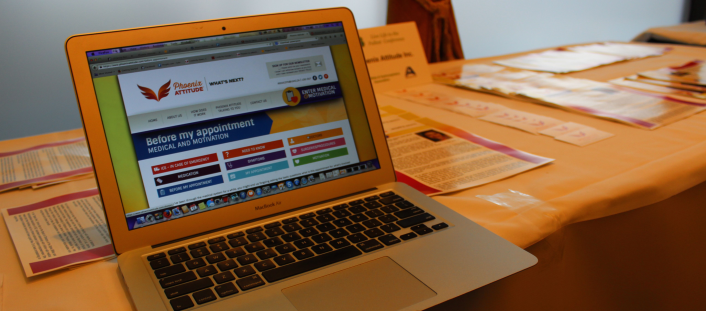What's New?
The Phoenix Attitude Blog

Accessibility Hits the Web
2015-02-27 Posted By Kim Phillips
As a business, especially one that is a brick and mortar store or office, it is essential that it is accessible to everyone. The building or storefront should take into consideration those who may need some assistance with stairs and those using wheelchairs or who may have limited mobility. As a business owner, you’ve done a great job ensuring customer accessibility by installing a ramp, railings and elevators. For people who may have their hands full, you’ve provided a button to open the door with an easy tap of the hand, or a hip if they’re carrying children, coffee, bags (or all of the above in my case ;)). So much care. So much thought and consideration.
So my question is, why haven’t you made your website accessible? Why hasn’t the same care gone into your site so it can be easily navigated by ANYONE at any time? Have you considered those who have a disability that may hinder their ability to find the information they need on your site? If your site is not accessible, you’re not doing your due diligence. I admit, there was a time where I hadn’t.
Whether you’re aware or not, online accessibility might be a big problem for you and the companies you may be working with. It is everyone’s right to be able to view your site and if it’s not up to code, you can be sued. Period. Check out this article for a huge wake up call. The good news is, it’s not too late to fix things!
To be honest, online accessibility wasn’t something I had thought much about until quite recently. I always knew our sites were up to standards, complying with “best practice” programming, but there is always room for improvement. What I didn’t realize was that some of our sites could be alienating people trying to view them. Knowing what I know now, I see this as a big obstacle that must be addressed by all website owners and creators.
Jenna Reed-Cote from Phoenix Attitude approached me to create and develop her dream tool into a brand and website, and it got me thinking. Is there something more that I can do to really make this site the best it can be for her audience? The site is intended to cater to those navigating through the medical system and I knew this wasn’t just any site – this is a critical tool built to assist a specific population of people. In Canada and the US alone, the average number of people with a disability who need assistance on their devices is, on average, 16% of the population. What’s increasingly disturbing is that the majority of websites out there don’t program for this audience. For me, that’s very unsettling.
The more I researched, the more I noticed how at fault I was with my programming practices. Immediately a phone call went out to the team and I’m proud to say we’ve made it mandatory across all of our sites to follow these rules for accessibility. You can check out the compliance guidelines here. Does your site measure up? If you’re unsure, here is a great tool to test your site right now – it will give you tips and notes on how to bring it up to speed and best of all it’s free. No excuses!
A few years ago, programming sites to be responsive wasn’t a standard across the board, but now it’s a given. At Patch Design we include responsive design and programming on all of our sites – big or small. We firmly believe this is an essential part of every digital strategy and simply part of the web requirements that should be delivered by anyone creating a website.
The WCAG requirements needn’t have a negative impact on the aesthetics of the website and can be implemented during the programming phase. I stand by it, big or small, sites should include these outlined features.
I am thrilled to have had the opportunity to work with Jenna on her exceptional venture. She is an inspiration to everyone around her. Since meeting her, my whole outlook on what I do has changed. At Patch, we always look for projects that can enhance our core offerings, and approach every opportunity as a chance to learn how to make our small machine run smoother and more efficiently. This is another step for us and one that hopefully others will join us in embracing.
I end this with a quote from the above article from Daniel Goldstein, who represents the NFB: “I don’t think that most people with disabilities in this country are looking for perfection. They’re looking for an opportunity to participate.”
Let’s make this happen. Let’s make this standard. Let’s make the web fair and equal for everyone.
Kim Phillips
Co-owner/Creative Director, Patch Design



 Sign up for our newsletter
Sign up for our newsletter



